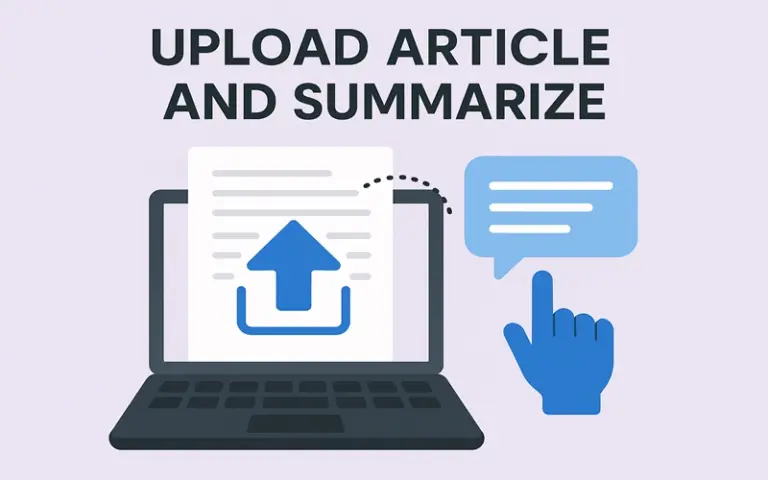URL Encoder and Decoder UploadArticle.com
In the world of web development, URL encoding and decoding are fundamental techniques used to ensure that URLs are transmitted over the internet without errors or issues. Whether you’re a developer working with APIs, a web designer managing form submissions, or even a casual user who needs to handle web data, understanding how URL encoder and decoder uploadarticle.com works can be incredibly valuable. This article provides a complete guide on URL encoding and decoding, exploring why they are essential and how UploadArticle.com simplifies the process.
What is URL Encoding and Decoding?
Before we dive deeper into the specifics of URL encoder and decoder uploadarticle.com, let’s clarify the basic concepts of URL encoding and decoding.
URL Encoding
URL encoding, also called “percent encoding,” is the process of converting characters into a valid format that can be transmitted over the internet. URLs contain a specific set of characters, and not all characters are permitted. For example, spaces, special symbols (like &, %, and #), and non-ASCII characters need to be encoded to prevent problems during transmission.
For instance, if you want to use a space in a URL, it’s not allowed. Instead, the space is replaced by %20. Similarly, other special characters are encoded to ensure they don’t break the URL structure.
Why is URL Encoding Important?
-
Security: Proper encoding prevents malicious data from being introduced into URLs, protecting both the user and the website.
-
Compatibility: URL encoding ensures that URLs work across different platforms and browsers, making them reliable.
-
Data Integrity: URL encoding ensures that all data, including special characters, remains intact when transmitted over the web.
URL Decoding
URL decoding is the opposite of URL encoding. However it’s the process of converting a URL-encoded string back to its original, readable form. This is essential for interpreting data sent through the web and making sure the final URL is accessible to the end user.
For example, if the URL is encoded as:
https://example.com/hello%20world
It will decode back to:
https://example.com/hello world
Why is URL Decoding Important?
-
Human-Readable URLs: Decoding URLs makes them easier to read and interpret.
-
Correct Data Interpretation: Decoding ensures that the information within the URL is correctly understood and displayed.
-
Troubleshooting: Decoding URLs helps developers track issues related to improper encoding or errors.
Read More : insurance uploadarticle
URL Encoder and Decoder at UploadArticle.com
Now that you understand what URL encoding and decoding are, let’s explore how UploadArticle.com offers an easy and convenient solution for these tasks with its URL encoder and decoder tool.
How Does the URL Encoder and Decoder Tool Work on UploadArticle.com?
Using the URL encoder and decoder uploadarticle.com tool is simple and straightforward. The platform is designed to be user-friendly, making it accessible for both beginners and advanced users alike.
1. Visit UploadArticle.com
First, head over to UploadArticle.com and search for the URL encoder and decoder uploadarticle.com tool. It’s easy to find and can be accessed from the main menu of the website.
2. Input Your URL
Once you’ve reached the tool’s page, you’ll notice two main input fields:
-
URL Encoding: For entering the string that needs to be encoded.
-
URL Decoding: For pasting the encoded URL that you need to decode.
3. Encoding or Decoding the URL
-
To encode: Input the string that contains special characters or spaces, and click the “Encode” button. The tool will convert it into a URL-friendly format.
-
To decode: Paste the encoded URL and click the “Decode” button to revert it to its original form.
4. Copy and Use
Once the encoding or decoding process is complete, the result will be displayed. However you can copy the encoded or decoded URL and use it wherever needed—whether for API calls, web development, or simply sharing a readable URL.
Why Use the URL Encoder and Decoder UploadArticle.com Tool?
There are several reasons why the URL encoder and decoder uploadarticle.com tool is a great option for developers and everyday users.
1. Speed and Efficiency
The tool is fast and provides quick results. Whether you need to encode or decode a URL, UploadArticle.com ensures that the process happens instantly, allowing you to move on to the next task without delay.
2. Simple and Intuitive Interface
Even if you’re a novice, the URL encoder and decoder uploadarticle.com tool is incredibly easy to use. The interface is designed with simplicity in mind—no complicated instructions or settings. Just input your URL and get results in seconds.
3. Free and Accessible
The UploadArticle.com URL encoder and decoder tool is free to use, making it an accessible solution for all types of users. Plus, there’s no need to register or sign up, allowing you to use the tool right away without any hassle.
4. Reliable and Accurate
One of the key benefits of using UploadArticle.com is the accuracy of the tool. However the tool is built to handle all kinds of URL encoding and decoding tasks, ensuring that your URLs are formatted correctly every time.
Features of the URL Encoder and Decoder UploadArticle.com Tool
-
Instant Encoding and Decoding: Quickly process URLs without waiting.
-
No Registration Required: Just access and use the tool immediately.
-
Support for Long URLs: Whether your URL is short or long, the tool will handle it seamlessly.
-
User-Friendly Interface: Anyone can use the tool with minimal instructions or effort.
-
Free of Charge: Access the tool for free without hidden charges or fees.
Use Cases for URL Encoding and Decoding
Why should you bother with encoding or decoding URLs? Here are a few common scenarios where you would find the URL encoder and decoder uploadarticle.com tool useful:
-
URL Shorteners: URL shortening services require encoding to ensure that URLs are safe to share on social media and across other platforms.
-
Web Forms: If you’re working with web forms, URL encoding helps prevent errors when users input special characters.
-
API Development: Developers often need to encode URL parameters when making API calls. UploadArticle.com simplifies this process.
-
Security: URL encoding can prevent issues where special characters may break a website or allow malicious code to run.
-
SEO Optimization: Well-encoded URLs may improve the readability of a website, enhancing SEO performance.
Read More : uploadarticle write for us
Conclusion
In conclusion, URL encoding and decoding are essential tasks in web development and online communication. Using a tool like the URL encoder and decoder uploadarticle.com can significantly simplify the process and ensure that your URLs are always correctly formatted. Whether you’re working with APIs, web forms, or simply need to share a URL, this tool can save you time and effort.
Read More : uploadarticle.com
Frequently Asked Questions
1. What is URL encoding, and why do I need it?
URL encoding is the process of converting special characters into a format that is safe for URLs. It’s necessary to ensure that URLs are correctly interpreted by browsers and servers. Special characters like spaces, &, %, and others are not allowed in URLs, so they need to be encoded to prevent issues.
2. How do I use the URL encoder and decoder uploadarticle.com tool?
To use the URL encoder and decoder uploadarticle.com tool, simply visit the website and enter your URL in the input box. However you can choose to encode or decode the URL depending on your needs. Click the respective button, and the tool will give you the result instantly.
3. Are there any limitations when using the URL encoder and decoder uploadarticle.com tool?
No, there are no significant limitations. The URL encoder and decoder uploadarticle.com tool is free, fast, and accurate. It can handle both short and long URLs and is easy to use with no registration required. Just input the URL and get the result in seconds.






